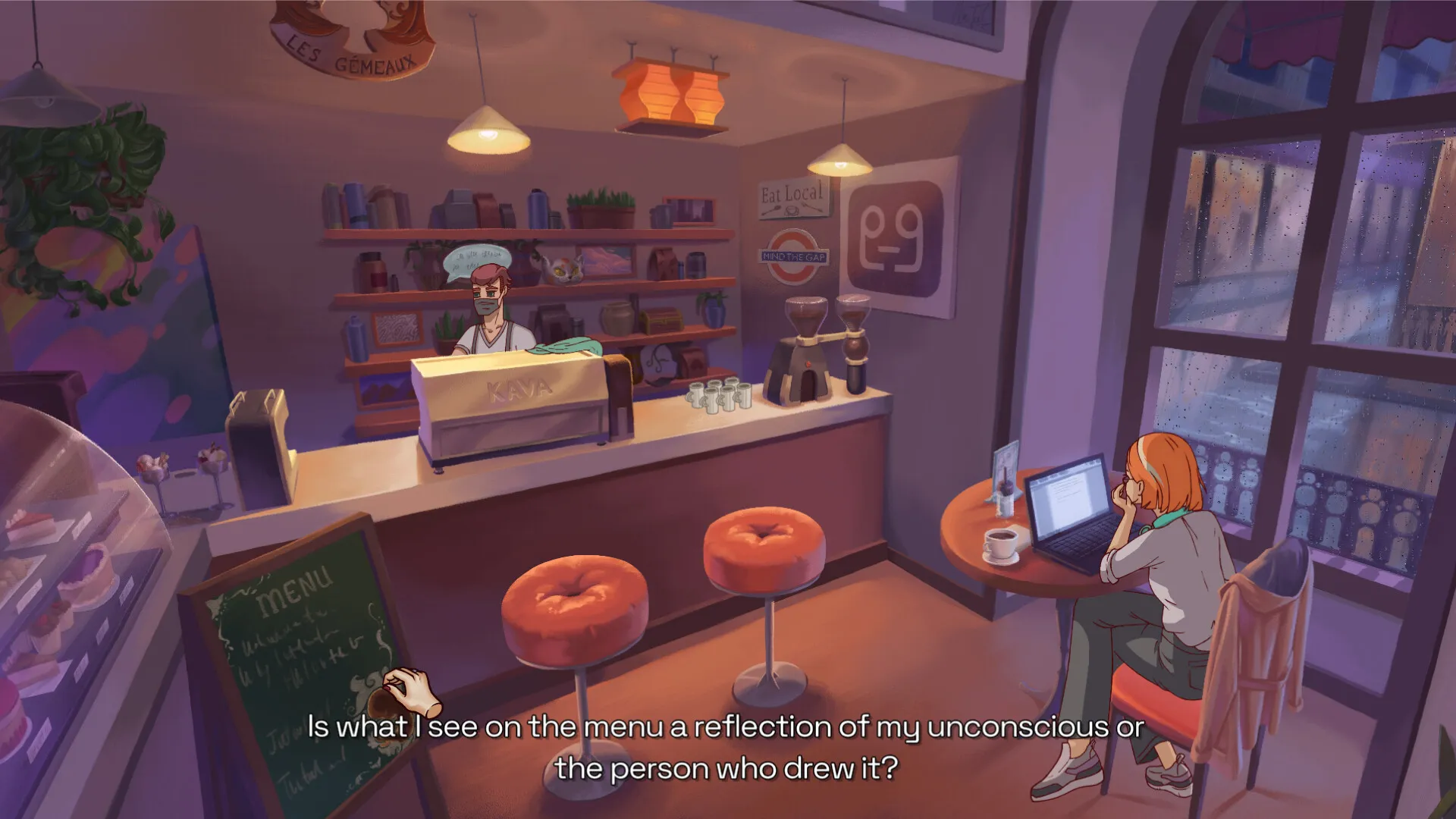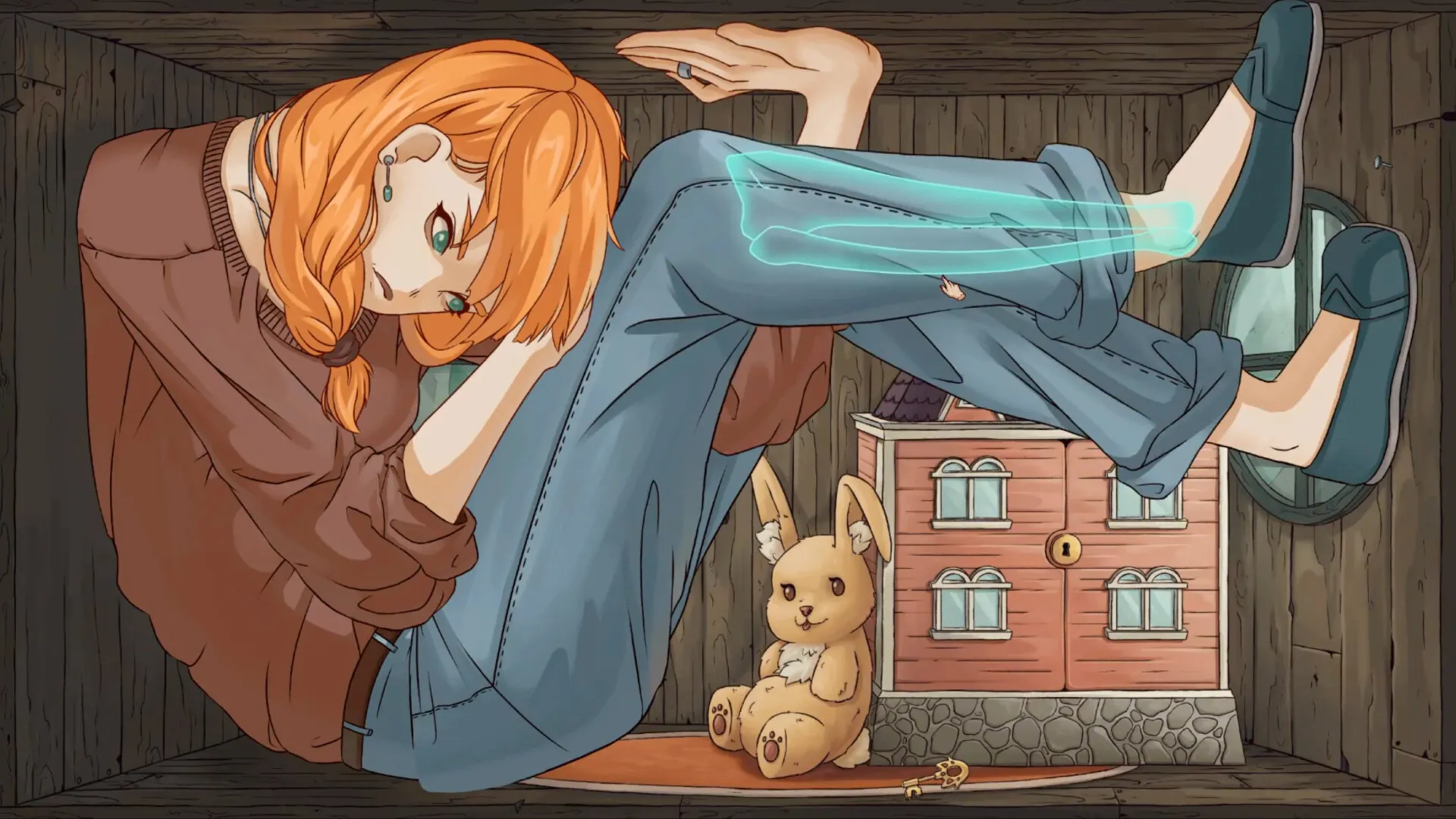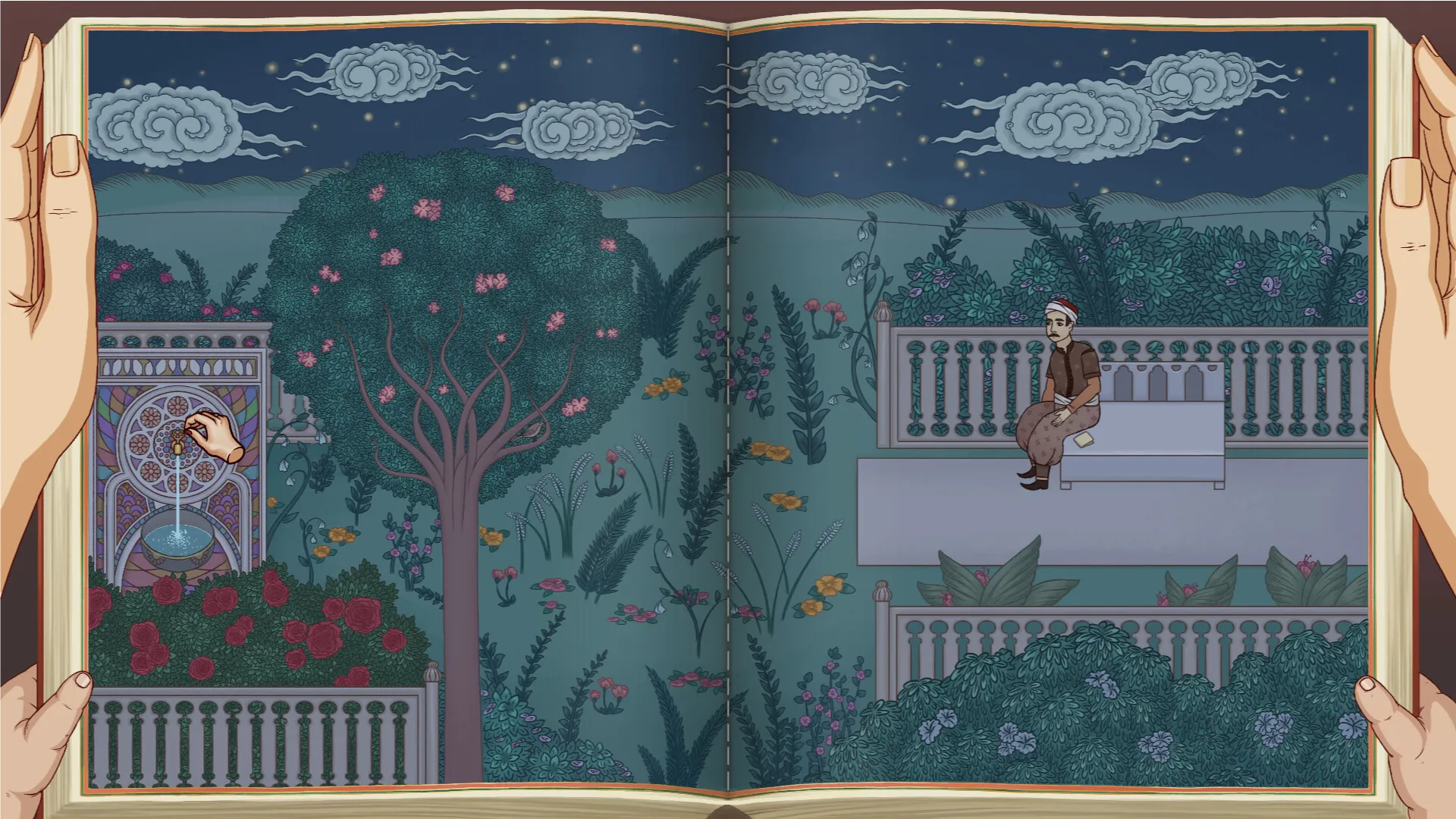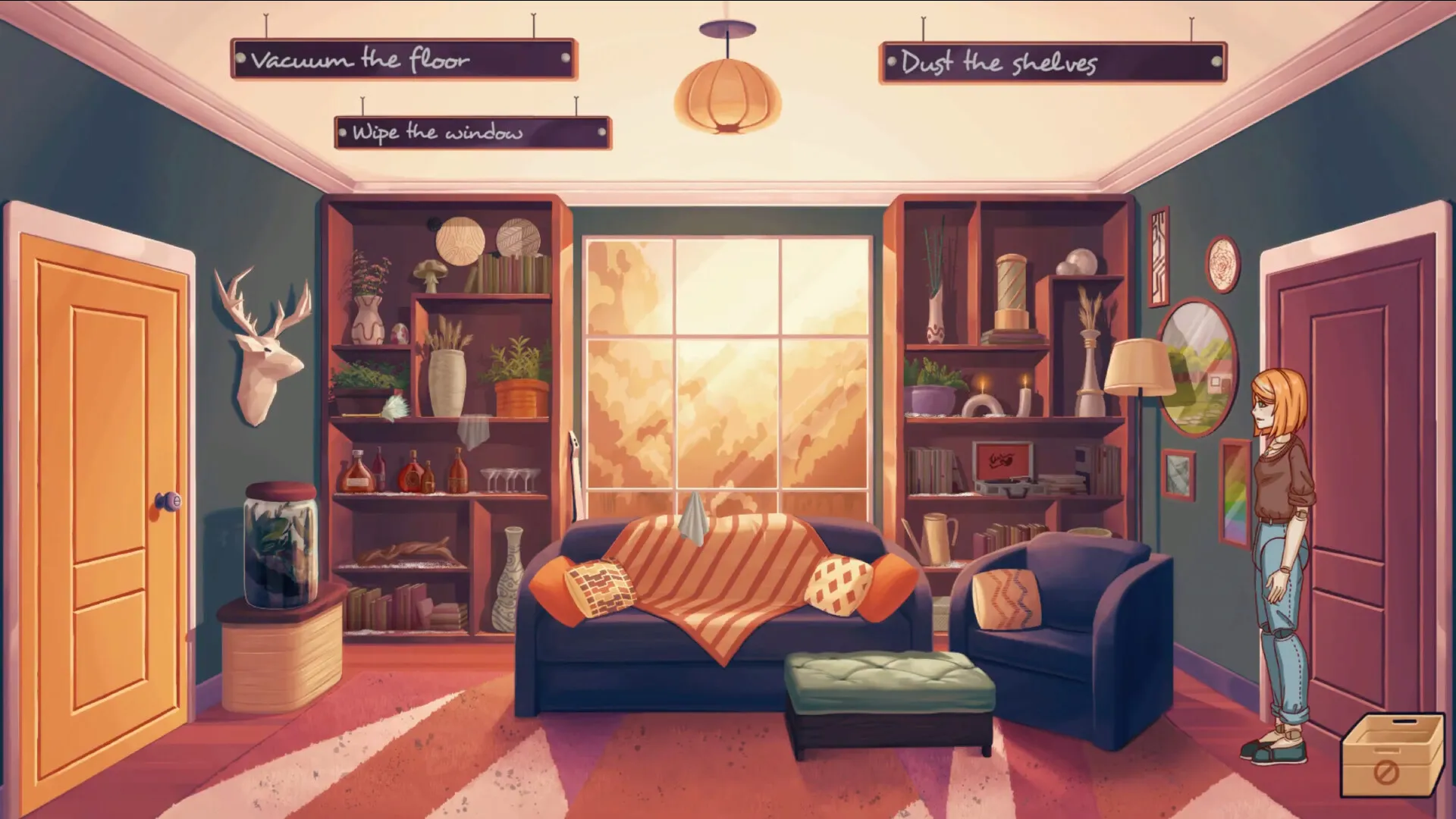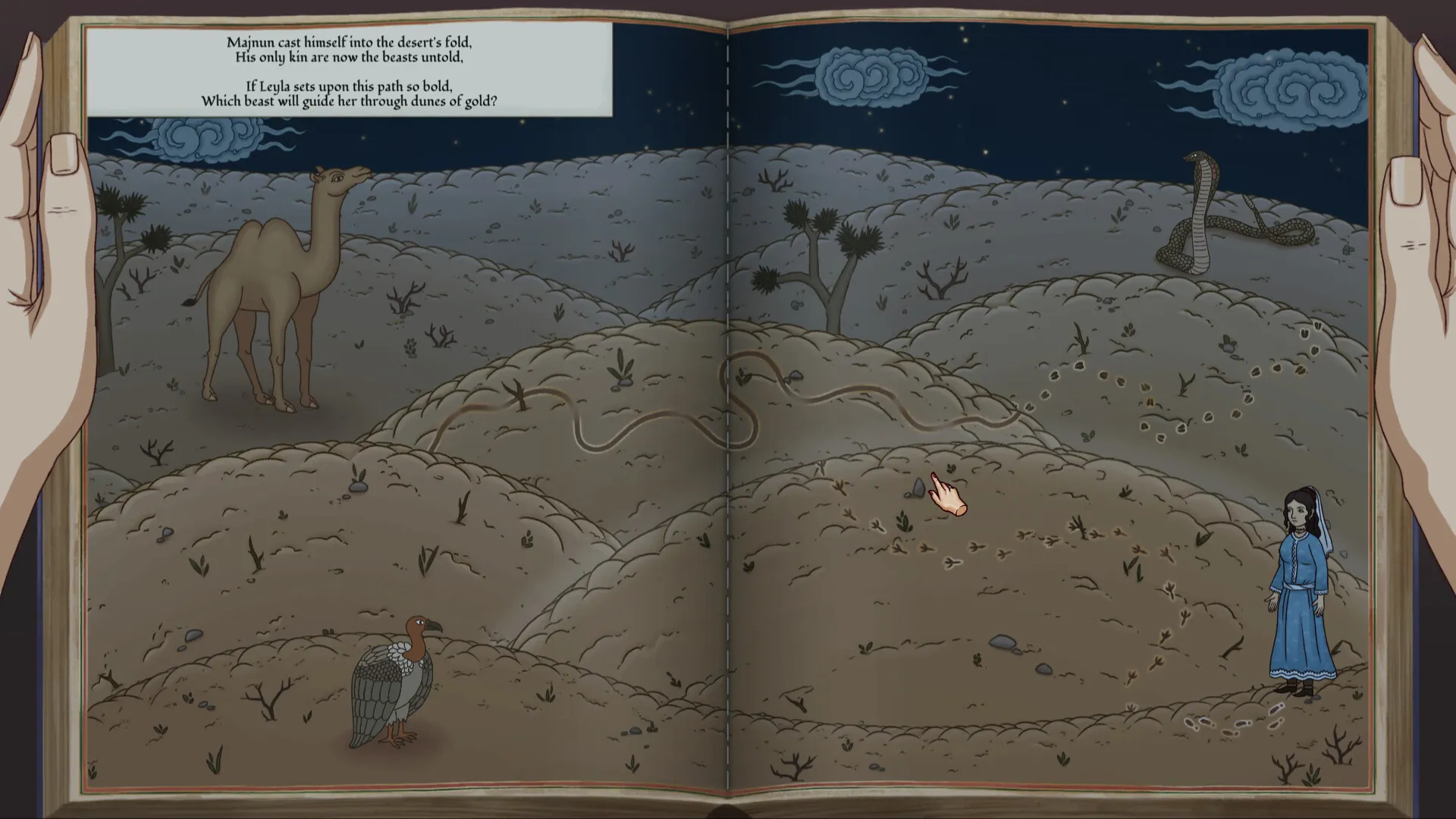Leila offers an experience where gameplay and story become entwined, inviting players to explore the recollections of a relatable woman. The game places you in control of Leila as she uses a VR device to enter representations of her past, transforming her memories into playable scenarios. Each interactive memory serves as both a puzzle and a window into personal reflections, with visuals that convey both warmth and a note of wistfulness.
In this experience, the way you interact with each memory carries weight. The puzzles are designed not merely as obstacles but as moments where your choices have an immediate impact on how the narrative unfolds. As you progress, small decisions shape the flow, giving you a sense that your actions influence the portrayal of Leila’s emotional state and past experiences. The design of these puzzles is carefully managed to ensure that they challenge your problem-solving skills while reinforcing the story’s gentle introspection.
The atmosphere created in Leila is inviting, with scenes that mix comforting visuals with hints of melancholy. The soft, hand-drawn imagery and subtle animations work in concert with the narrative, evoking familiar feelings without sacrificing clarity. This section sets the stage for understanding how the game marries interactive elements and personal storytelling into a singular experience that speaks to a wide range of players.
Interwoven Echoes: Memory, Identity, and Choice
Leila organizes its story into four distinct sections that mirror different stages of life, beginning with early memories and progressing through maturity. Each segment presents a self-contained exploration of personal history, where the challenges of youth give way to the complexities of adulthood.
The game presents a series of interactive recollections that draw the player into moments of both hardship and tenderness, charting experiences that reflect struggles with loss, the pain of separation, and the healing found in self-realization.
The narrative uses memory as a powerful tool, turning the events of a lifetime into puzzles that require careful thought. The format converts past events into physical challenges that the player must resolve. These puzzles, embedded in the contours of Leila’s history, align with the themes of identity and inner conflict. Scenes featuring the familiar routines of family life or the solitary hours of self-reflection capture the real-life tensions of forming relationships, managing responsibilities, and questioning personal choices.
A closer look at Leila as a character reveals multiple roles—she functions as a parent, a writer, and a partner, each aspect bringing its own set of internal contradictions and challenges. Her reflective monologues convey moments of happiness mixed with a quiet sadness, allowing players to witness the nuanced evolution of her character over time. Decisions made during interactive moments influence the pace of her narrative, giving the player a measurable sense of influence on her progress.
The emotional weight of the narrative manifests subtly in the way personal history is portrayed. The transformation of familiar experiences into interactive puzzles provides a tactile connection to memories that might otherwise remain abstract, inviting a reconsideration of how everyday choices carve out a life story. This careful balance of interactive storytelling and emotional depth creates a reflective atmosphere that holds players’ attention with each passing chapter.
Mechanics in Motion: Puzzles and Story Integration
Leila presents a straightforward control system found in classic point-and-click games. The interface guides you through distinct memory environments, each crafted as a setting where past events unfold through interactive elements. The controls are responsive, allowing for smooth interactions when selecting objects, dragging items, or activating key narrative triggers. This simplicity invites both new players and seasoned fans of the genre to comfortably explore each memory scene.
The game offers a variety of puzzles that mirror the layers of Leila’s past. You encounter challenges that require you to observe environmental details, recognize recurring patterns, and solve logical conundrums. Every puzzle is a component of the storytelling process, merging gameplay with personal reflection.
The design ensures that solving these challenges feels like uncovering pieces of a character’s hidden history. In several instances, puzzles arise from everyday activities reflected in Leila’s recollections—whether it is tidying a room or arranging elements in a childhood scene. These interactive tasks transform moments that might otherwise be static into dynamic moments where your actions influence the narrative’s pace.
Memory fragments are unlocked as you complete these puzzles. This setup creates a feedback loop where your choices affect both the visible narrative and the state of the puzzles themselves, granting you a degree of control over the narrative’s flow.
A system of gentle hints offers assistance during more challenging segments without removing the satisfaction of overcoming a difficult task. The hints appear contextually, ensuring that the challenge remains intact while guiding you back on track if you experience frustration.
Comparisons with titles in similar genres show that Leila manages to link mechanics and narrative closely. It maintains a balance where each puzzle, regardless of difficulty, serves a dual purpose: to engage your brain and to expose subtle emotional cues embedded in the storytelling.
Sketches of Memory: A Closer Look at the Artistry
Leila presents a striking 2D hand-drawn style that shapes each memory into a carefully rendered work of art. The visuals evoke a sense of familiarity and emotion, using detailed line work and subtle color palettes that match the tone of each recollection. The style recalls classic illustrations while giving each memory a distinctive character that appeals to both nostalgic players and fans of thoughtful visual design.
Each location in the game is thoughtfully created. Interiors that feel warm and welcoming contrast with depictions of busy urban backdrops, quiet natural environments, and more abstract memory sequences. Scenes such as a childhood bedroom come alive with personal touches that spark reminiscence, while depictions of a mystical forest instill feelings of mystery and reflection. The varied settings work together to deepen the impact of the narrative, with every backdrop serving to heighten the emotions tied to that chapter of Leila’s past.
Subtle animations enhance the static illustrations. Small details—a curtain that moves gently in the breeze, a tail moving in a languid swish, or leaves drifting to the ground—provide a layer of life that adds to the overall ambiance. Visual effects, such as careful zooming and smooth transitions between scenes, guide player focus without overwhelming the quiet rhythm of the storytelling.
Throughout the game, the art direction maintains a consistent style that supports the shifting moods of different memories. Changes in color tone and detail serve as visual cues for shifts in atmosphere, from intimate recollections to moments of sober reflection. Every visual element appears designed with a clear purpose, creating a seamless dialogue between what is seen and what is felt.
Sonic Imagery: Sound and Voice
Leila features a soundscape built around soft lo-fi and ambient tracks that shape the emotional setting in each memory. The music plays at a gentle volume, creating an atmosphere that complements both quiet and intense passages. The arrangements use sparse instrumentation and soothing melodies that align smoothly with each interactive moment, reinforcing the pace of the unfolding narrative without drawing focus away from gameplay.
Background sounds add tangible detail to every scene. The subtle echo of everyday life—gentle footsteps, murmuring nature, or the creak of a familiar room—brings each memory to life. These audio details enhance the tactile feel of the environments, deepening the connection between player interaction and the evocative spaces offered by the game.
Leila’s vocal delivery stands out for its careful modulation and emotional clarity. The narration captures shifting moods and authentic expressions, mirroring the character’s inner state as memories surface. Audio cues prompt attention at key points during puzzles and interactive sequences, offering gentle nudges that keep the pace steady. This integration of sound and voice adds a layer of genuine feeling to the experience, balancing the technical design with a sensitive portrayal of personal history.
Precise Navigation: Controls and Technical Execution
Leila employs a point-and-click interface that suits a narrative puzzle adventure well. The controls utilize object dragging, clicking, and rotating elements to engage with environmental puzzles. The interface is clean and intuitive, offering customizable hint features and cursor adjustments that ease the process of identifying interactive elements across varied memory scenes.
Some interactions may occasionally feel less responsive during sensitive puzzle moments, yet such instances rarely disrupt gameplay. The game maintains steady performance across different platforms; PC versions provide a smoother experience compared to consoles, where minor glitches and load time delays have been observed.
Transitions between memory segments remain smooth, preserving graphical consistency. Comparisons with similar indie titles show that Leila’s technical framework achieves a commendable balance between ease of use and thoughtful puzzle design, contributing to an overall experience that is accessible and engaging for both casual fans and dedicated gamers.
Continuing Echoes: Pacing, Replay, and Experience
Leila moves through four distinct memory chapters with measured pacing that provides ample space for introspection and deliberate interactions. Its runtime, spanning a couple of hours, carves out a compact narrative that captures a series of reflective moments without overwhelming the player. The concise design favors a focused experience, though some might wish for the chance to explore narratives more deeply.
The game offers limited replayability given its single gameplay mode. However, variations in puzzle outcomes and the discovery of hidden elements encourage revisiting the experience for renewed personal insight. Each playthrough has the potential to evoke different reactions, drawing attention to subtle narrative cues and personal memories.
Blending narrative, visual art, sound, and gameplay interactions, Leila creates an immersive experience that leaves players considering the interplay between personal choices and remembered moments.
The Review
Leila
Leila impresses with its thoughtful narrative puzzles that seamlessly mix story, visuals, sound, and player choices. The game’s brief format delivers focused, reflective moments, even if some players might wish for additional depth. Minor technical quirks do little to hinder the careful integration of emotional and interactive elements.
PROS
- Thoughtful integration of puzzles and narrative
- Beautiful hand-drawn visuals that enhance the story
- Engaging, emotionally charged audio design
- Intuitive controls suited for varied players
- Atmospheric soundscape that complements gameplay
CONS
- Short overall playtime
- Limited replay value
- Occasional technical inconsistencies
- Some puzzles may feel repetitive









































